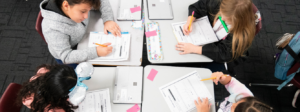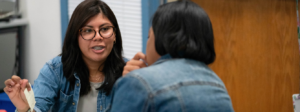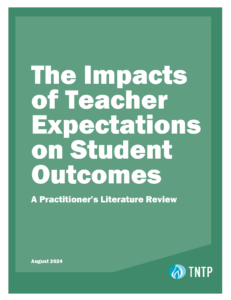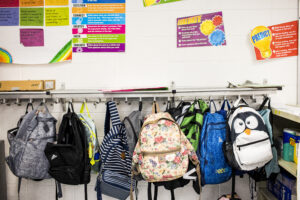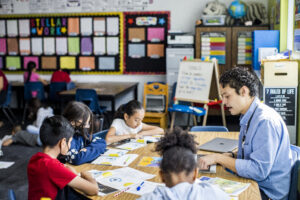Stephanie Carroll is a PhillyPLUS resident and an Assistant Principal at Hill Freedman World Academy in Philadelphia, PA.
Before I became a school leader last year, I was a high school writing and learning support teacher for four years. The transition was, I admit, not an easy one. I found myself missing my own classroom, and in particular, the bond all great teachers create with their students.
In my classroom, I had grown close with my kids by encouraging them to share their personal stories and opinions in their writing and day-to-day conversations. I reveled in working with them in small settings and seeing first hand their progress towards individual goals. The familiarity I built with them each day as we shared the same space and dug into the same work made my classroom feel like a community—a community I had a hard time letting go of.
Entering my role as an Assistant Principal, I felt removed from kids because I assumed I wouldn’t get to work with them directly nearly as often. I understood my role as primarily an instructional leader for teachers—in other words, someone who helped teachers outside of the classroom. But the truth is, it’s just as important for school leaders to interact with kids as it is for teachers.
Quickly, I realized my new role didn’t mean I would need to remain out of the classroom entirely. In fact, I was encouraged to visit often by my principal. “Always talk to the kids,” he told me. “They know exactly what is going on.” He was right. They do.
In my first year as a school leader, I’ve learned that student feedback is the most powerful tool to improve the practice of my teachers. It offers evidence of the outcome of instruction from the mouths of the people who have the most at stake in the process. As a result of student feedback I have been able to make decisions about professional development, program structure, and teacher development.
When I visit a classroom, I sit next to students, laptop open. Between taking notes on the activity of the classroom, I ask them questions: What are you learning? What are you all supposed to be doing right now? Can you show me how you solved that? Does everything make sense? When I hear an answer like “I’m not really sure,” I know that I must coach a teacher around setting clear objectives and checking for understanding. When I see a student disengaged, I know to come back to that student in a feedback conversation, look at their data, and have a conversation with the teacher about their progress and needs.
If students in a math class can only explain process and procedure through words, I know that I need to provide their teacher with resources and coaching around ways to encourage student explanation and reasoning with math. When students can’t explain a concept in Biology that was covered a month ago, I know to push their teacher to review the way assessments are given and used in class.
Students in my school tell me everything I need to know. They tell me if they think a lesson is confusing; they explain concepts to me to prove they understand something; and they offer suggestions for how to define terms more clearly so that they can read a passage with more ease or better understand a lesson. Sitting in classrooms and talking with them are crucial moments of my day that ground my work.
Beyond helping me do my job better, talking to students also grounds me personally. Even though I no longer have a classroom where I can build day-to-day personal relationships with students, the small moments I interact with them help recreate that familiarity. A simple “How are you?” in the hallway creates a bond, changes a student’s day for the better, and provides me with important information in the process.
Funny enough, though my efforts at school are now aimed at adults, my relationships with students are what allow me to do my job well—and see with complete clarity how teachers’ actions affect those who matter most.


